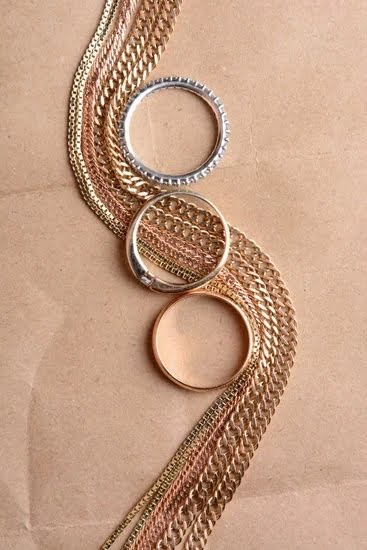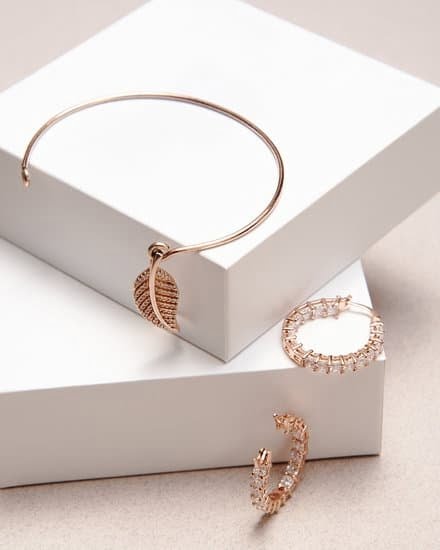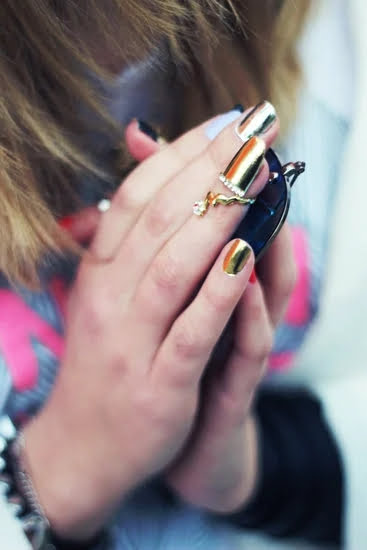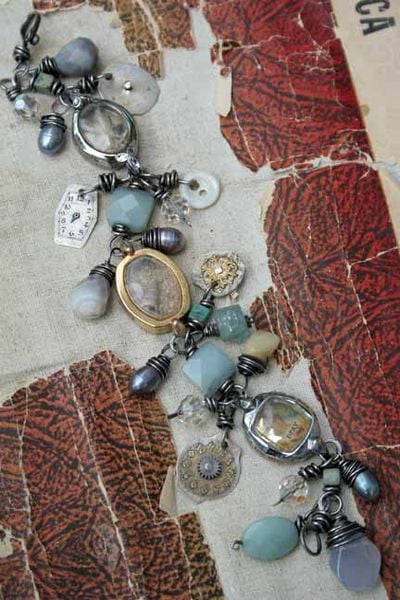Introduction
Nickel is a common element found in many everyday items. It’s used in jewelry, utensils, phones and coins, as well as various industrial products. While it’s not necessarily dangerous at low levels of exposure, in certain individuals nickel can cause skin irritation, allergies or asthma-like symptoms like wheezing and shortness of breath. In addition, more serious side effects have been associated with prolonged exposure to high concentrations of nickel. Because of this, it’s important to know whether copper jewelry contains nickel so that user safety is taken into account before wearing or using any product containing nickel. So does copper jewelry contain nickel? The answer is, it depends.
While most copper jewelry does not contain any traces of nickel either intentionally added or by virtue of the manufacturing process, copper alloyed with other metals such as brass and sterling silver may possibly contain small amounts of nickel which were present during the alloying process and could be enough to trigger an allergic reaction depending on a person’s sensitivity level towards the metal. To be sure you are avoiding potential health risks from potential allergen materials contained within your jewelry, always ask about its composition when buying jewelry or if unsure for existing pieces purchased elsewhere. Nickel-free labels are also often stamped into the backside of some pieces to provide assurance that no elemental form of nickel has been added. Wearing gloves while handling metals is another way to prevent contact dermatitis caused by transdermal absorption through skin contact with possible allergen materials present in jewelry items.
History of Copper and Its Many Uses
Copper is one of the oldest and most versatile metals in existence. It has been used for thousands of years and in many different cultures for a variety of purposes, ranging from decorative art to good luck charms. Copper was even used to make coins and weapons in ancient times. Due to its malleability, copper is also valued as an easily worked material, making it popularly used in jewelry and other handicrafts.
Nowadays, copper still serves many important uses that range from industrial products such as electric wiring, electronics components, plumbing pipes, cookware and roofing material to coins and jewelry pieces. Depending on where it’s sourced from and its desired properties, copper can be alloyed with nickel or zinc to create different mixtures that vary greatly in their physical characteristics. In the case of jewelry pieces, the jewelry may contain significant amounts of nickel if it is not part of the naturally occurring elemental makeup of the artifact itself. Furthermore, metalsmiths may also use alloys that contain a higher concentration of nickel along with other elements such as silver or even gold for their pieces to achieve a particular look or feel; This means that when considering whether or not any given piece of jewelry contains nickel should assess both what kind of mixture was used by its creator as well as where its essential components were sourced from prior to being crafted into a decorative workpiece.
Exploring Nickel Allergies
Having an allergy to nickel is actually very common, affecting about 15%-20% of the global population. In addition to jewelry, small amounts of nickel can also be found in coins, cell phones, eyeglass frames, watches, laptops and even door handles. While copper jewelry usually does not contain significant amounts of nickel, allergic reactions may still occur if some trace amounts are present within it.
In order to properly identify if you have a Nickel allergy or otherwise known as contact dermatitis, it is important to first understand what causes this type of reaction. Generally speaking, contact dermatitis occurs when the body’s immune system overreacts to a substance that someone has touched or ingested. One key cause of Nickel allergies is the “leaching” of this metal from cheaply-made jewelry pieces. Small levels of nickel may still be present due to cheaper plating solutions used during production – which can then transfer onto your skin and cause an allergic reaction when coming into direct contact with it. So while copper may often not include significant levels of Nickel, there are certain cases where this could still be possible depending on how it is manufactured or plated.
If you suspect that you have a Nickel allergy or other form of contact dermatitis, it is important to consult with your physician for testing and further guidance on treating any potential symptoms you may have.
Understanding copper alloys
Copper alloys are a blend of copper and other metals like zinc, tin, or nickel. Depending on the concentration of each metal within the alloy, copper alloys can display a variety of properties. Copper alloys are often chosen to boost the properties of copper by adding strength, corrosion resistance, hardness or electrical conductivity. Pure copper is soft and malleable making it difficult to use in certain jewelry processes such as casting for intricate shapes or creating intricate designs. Since pure copper is so soft it may also wear away quickly. By blending metals together with copper you can reduce the working time dedicated to follow up maintenance and/or increase the length of time before refinishing/replacing is needed due to wear from daily usage or age when used in jewelry applications such as rings, pendants and bracelets.
Though some grades of jewelry-quality base metals may contain small amounts of nickel for added strength, there are many coppers that do not contain any nickel at all. This makes them much more suitable for individuals who suffer from allergies due to contact with nickel-bearing bases metals such as brass or bronze. When purchasing jewelry made with a copper alloy make sure to understand which base metal was used in order to ensure that it doesn’t contain nickel before purchasing if you have an allergy concern.
Is Copper Jewelry Containing Nickel Safe to Wear?
Yes, copper jewelry can contain nickel. Copper can be alloyed with other metal elements such as zinc and nickel to create different types of metal products. Jewelry manufacturers often use these compounds to create a variety of products. While the presence of nickel in copper jewelry does not necessarily make it unsafe, some people may experience contact dermatitis if they are sensitive to the nickel compound. Contact dermatitis is an allergic reaction that can cause swelling, redness and irritation when someone comes in contact with the irritant allergen. Wearing gloves while handling or wearing the jewelry may help minimize any potential allergic reaction. It is also important to wear only pieces of jewelry that are marked and labeled as nickel-free or hypoallergenic if you have an allergy to nickel and want to wear copper jewelry without any adverse reactions.
Identifying Copper Jewelry That Contains Nickel
The answer to the question, ‘Does copper jewelry contain nickel?’ depends on the type of copper jewelry in question. Nickel can be found in copper alloys, which are a combination of metals including copper and other materials. Copper can also be electroplated with a nickel finish, covering it with a thin layer of pure nickel. The most common types of copper jewelry that contain nickel are brass and bronze. Brass is an alloy that contains approximately 35-45% zinc and 5-20% nickel; bronze usually contains around 3-8% tin and 1-7% nickel.
Different tests may be used to distinguish whether or not a piece of jewelry is made out of an alloy or has a thin layer of nickel plating on top. One test involves scratching the surface with a sharp point; if a bright yellow color appears beneath the scratch indicating the presence of zinc, then it’s likely that this piece is made out of brass or bronze. Alternatively, applying vinegar to the surface may also help identify pieces made from pure copper versus alloyed ones as vinegar reacts more effectively when applied to non-alloyed metals such as pure silver, gold, or copper. However, neither these tests nor visual identification are infallible methods for identifying whether or not platinum is present in any material since quality control regulations vary between manufacturers and alloys often have almost identical appearances to those without any additional materials present.
Practical Solutions for Avoiding Nickel-Containing Copper Jewelry
Yes, copper jewelry can contain nickel in different forms. Nickel is a hard mineral that is often added to copper to increase its strength and durability for jewelry manufacturing processes. Copper on its own tends to be softer and more malleable than other metals, so it needs to be strengthened with nickel alloying. As well as making the jewelry stronger, buying pre-alloyed copper helps keep smelting costs down, reducing production costs significantly.
There are a few ways of avoiding nickel-containing copper jewelry. Firstly, look out for items that come with a guarantee that there is no nickel present in them. Most reputable companies will provide guarantees or certificates of authenticity stating the materials used and their chemical composition. This can give you greater peace of mind when selecting your copper jewelry purchases. Secondly, consider buying the raw material such as wire or sheet metal, then finish it yourself through annealing and hammering into shape. Since you control all the materials used and what goes into your product at every step, you can create your own nickel-free pieces from scratch if you wish. Finally, when getting rings sized opt for stretching rather than soldering since soldering usually involves adding accelerants which may contain nickel or other trace elements impossible to identify from just sight inspection alone.
Conclusion
To summarize, copper jewelry can contain nickel depending on the alloy used. Many copper alloys, including those that contain silver and brass, may also include a small amount of nickel. Therefore, people who suffer from nickel allergies need to be aware of possible metal contact and take steps to avoid or protect their skin as necessary. It is recommended that these individuals carefully inspect any jewelry items before purchasing or wearing them. Those with extreme sensitivity to nickel should only choose copper jewelry made from pure copper compositions without additives or alloys. Additionally, individuals can look for Italian-made copper products which are regulated for low levels of nickel content and are safe for those with skin sensitivities to wear.

Welcome to my jewelry blog! My name is Sarah and I am the owner of this blog.
I love making jewelry and sharing my creations with others.
So whether you’re someone who loves wearing jewelry yourself or simply enjoys learning about it, be sure to check out my blog for insightful posts on everything related to this exciting topic!





